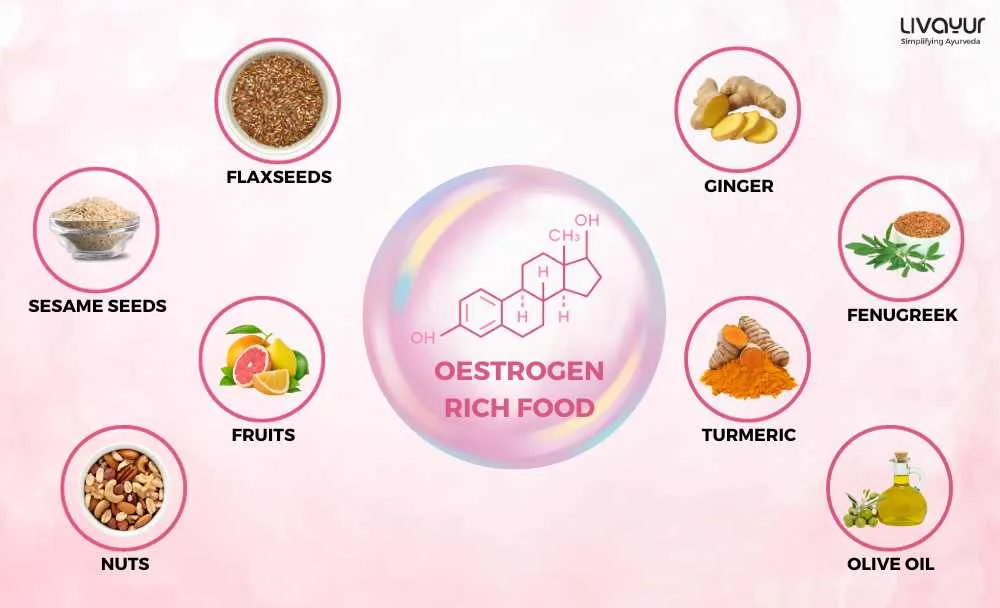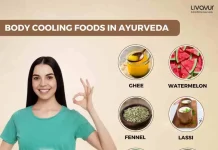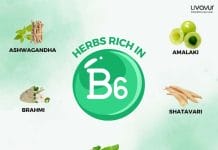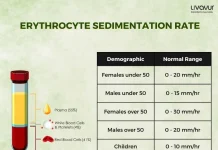
Oestrogen, a vital hormone in the human body, plays a crucial role in various physiological processes, particularly in women’s health. It helps regulate the menstrual cycle, supports bone health, and contributes to overall well-being. Including oestrogen-rich foods in your diet can help support hormonal balance naturally. In this comprehensive article, we will explore 15 of the best oestrogen-rich foods from an Ayurvedic perspective and discuss their potential benefits. Please note that while these foods may contain compounds that have oestrogenic effects, consulting with a healthcare professional or Ayurvedic practitioner is recommended for personalized guidance.
First, let’s take a look at a few important things you need to know about the oestrogen hormone and your body.
The importance of oestrogen [1]
Estrogen or oestrogen, is a sex hormone that is responsible for the development of the reproductive system in females. Estrogen is often referred to as estrone, estradiol, and estriol. Of the previously mentioned forms of estrogen, estradiol is the most common form of estrogen hormone for hormone replacement therapy (HRT) in the treatment of symptoms of menopause.
However, its importance isn’t simply limited to the development and regulation of female reproductive organs. It also plays an important role in the overall health and development of our bodies, be it for a man or a woman.
Less or excess oestrogen in our bodies could lead to serious health issues. This steroid hormone controls almost all aspects of female and even male health. Here’s how oestrogen impacts our bodies:
1. Breast development
In females, estrogen is the hormone that causes the development of mammary gland tissue as well as parenchymal and stromal alterations in breast tissue during puberty. In addition, estrogen plays a role in the development of the mammary ducts throughout adolescence and pregnancy, as well as in the secretion of breast milk during the postpartum period.
2. Building uterine wall
During the follicular phase of the menstrual cycle, estrogen promotes the growth of endometrial cells in the uterus, thickening the uterine lining in anticipation of pregnancy. It helps regulate menstrual cycles in women. Women with a deficiency of estrogen often experience irregular and painful menstrual cycles.
3. It helps with contraception
The active ingredient in over-the-counter birth control pills (OCPs), ethyl estradiol, suppresses the production of gonadotropin-releasing hormone (GnRH) from the hypothalamus. It also prevents the release of follicle-stimulating hormone (FSH) and luteinizing hormone (LH) from the pituitary, thereby preventing ovulation during the menstrual cycle.
4. Prevents vaginal dryness
The vulva and vaginal mucosa’s epithelial cells proliferate in response to estrogen. The lack of estrogen causes dryness of the vagina and vulva.
5. Protects bones
Estrogen contributes to the formation of long bones throughout puberty. It also prevents osteoporosis in both postmenopausal and estrogen-deficient women by inhibiting osteoclast activity.
6. Boosts cardiovascular health
Estrogen helps lower cholesterol levels and reduces the risk of coronary artery disease with early use in postmenopausal women.
Required oestrogen levels for men and women [2]
Normal levels of Estrogen or Estradiol required in our body are as follows:
- 30 to 400 pg/mL for premenopausal women
- 0 to 30 pg/mL for postmenopausal women
- 10 to 50 pg/mL for men
Here pg/ml is picograms per milliliter.
If your results are lower, it may mean you have ovarian failure, also called early menopause, or low estrogen from rapid weight loss or anorexia.
If your results are higher, it may suggest a tumor of the ovary, testes, or adrenal glands.
Here are the 15 oestrogen-rich foods to help you balance this essential hormone in your body:
15 best oestrogen-rich foods
1. Flaxseeds
Flaxseeds are nutritional powerhouses packed with lignans, a type of phytoestrogen. These lignans possess estrogenic properties and can help balance hormone levels in the body. Including ground flaxseeds in your diet is an excellent way to incorporate this oestrogen-rich food. [3]
2. Soy Products
Soybeans and soy-based products like tofu and tempeh are well-known for their high content of isoflavones, a type of phytoestrogen. Isoflavones mimic the action of oestrogen in the body, supporting hormonal balance. Incorporating soy products into your meals can be beneficial for overall health. [4]
3. Sesame Seeds
Sesame seeds are tiny powerhouses of nutrition and contain lignans that have oestrogen-like effects. These seeds can be easily incorporated into your diet by sprinkling them on salads, stir-fries, or using sesame oil for cooking. [5]
4. Legumes
Legumes, including chickpeas, lentils, and black beans, are not only rich in fibre and protein but also contain phytoestrogens. Consuming legumes regularly can provide a range of health benefits while promoting hormonal balance. [6]
5. Fruits
Certain fruits, such as apples, peaches, and pomegranates, contain natural compounds that exhibit oestrogen-like properties. Including these fruits in your diet can be a delicious way to support hormonal health. [7]
6. Nuts
Nuts like almonds, walnuts, and pistachios are not only nutritious but also contain compounds that have oestrogenic effects. These nuts can be enjoyed as a snack or added to various dishes to enhance their oestrogen-rich content. [8]
7. Whole Grains
Whole grains like oats, brown rice, and quinoa provide essential nutrients and contain phytoestrogens. These grains can be included in your meals as a healthy carbohydrate source while supporting hormonal balance. [9]
8. Cruciferous Vegetables
Cruciferous vegetables such as broccoli, cauliflower, and Brussels sprouts are not only rich in fibre but also contain indole-3-carbinol, a compound that aids in oestrogen metabolism. These vegetables can be enjoyed in various cooked or raw preparations to enhance your oestrogen-rich food intake. [10]
9. Herbs and Spices
Certain herbs and spices are known to have oestrogenic properties. Fenugreek, thyme, sage, turmeric, and ginger are excellent examples. Including these herbs and spices in your cooking can add flavour and provide potential benefits for hormonal balance. [11]
10. Olive Oil
Extra virgin olive oil, a staple in the Mediterranean diet, is a healthy source of monounsaturated fats and antioxidants. It is Ayurvedically considered a good fat that supports hormonal health and overall well-being. [12]
11. Dairy Products
Dairy products such as milk, yoghurt, and cheese contain natural oestrogen from animal sources. Including these products in your diet, particularly from organic and hormone-free sources, can contribute to your oestrogen-rich food intake. [13]
12. Sea Vegetables
Sea vegetables like nori, kelp, and wakame are rich in minerals and also contain natural oestrogens. These marine plants can be incorporated into dishes like soups, salads, and sushi to boost your oestrogen-rich food intake. [14]
13. Liquorice Root
Liquorice root is a herbal remedy that has been traditionally used to support hormonal balance, particularly in women. It can be consumed as tea or used in Ayurvedic preparations to enhance oestrogenic effects. [15]
14. Red Clover
Red clover is a herb that contains isoflavones, which can mimic the effects of oestrogen in the body. It is often consumed as a tea or in supplement form and may offer potential benefits for hormonal health. [16]
15. Dried Fruit
Dried fruits like dates, apricots, and prunes contain phytoestrogens and can be enjoyed as a healthy snack or added to various recipes to enhance the oestrogenic content of your diet. [17]
Symptoms of low oestrogen levels [18]
The time before a person’s menstrual cycle completely ends (menopause), when their hormones begin to shift and create symptoms, is known as perimenopause. During perimenopause, a person’s estrogen levels decrease. After 12 months without menstrual flow, a person enters menopause. Here is a list of symptoms you can check for:
Low estrogen symptoms can include:
- The three most prevalent signs of low estrogen are flushes, nocturnal sweats, and hot flashes. Sometimes blood shoots to the surface of your skin. You may get a hot flash or sensation of warmth. Hot flashes that happen at night when you’re sleeping cause night sweats. So, if you’re sweating in your sleep, it might not be a great sign for your overall health.
- Another consequence of insufficient estrogen is mood swings. You might experience frustration, anxiety, or sadness. Hormone fluctuations and nocturnal sweating may disturb the sleep cycle. This would further result in fatigue, leading to more mood swings.
- Tissue thinning could be uncomfortable. The skin might look more wrinkly. Urinary tract thinning may result in bladder infections. Also, you might experience an immediate need to urinate. Alternatively, you can become incontinent (lose control over your bladder). Vaginal thinning might result in dryness and uncomfortable intercourse.
Side effects of excess oestrogen
- If, after menopause, women have greater levels of estrogen, they will be more susceptible to breast cancer. The higher the levels of estrogen in the body post-diagnosis, the lower the chances of the female’s survival in such cases. [19]
- Here is a list of further damage that can be caused by the excess of natural and synthetic estrogen: [1]
- Estrogen hormone receptor-sensitive malignancies including breast cancer, ovarian cancer, and endometrial cancers
- Coronary arterial disease
- History of thromboembolism or thrombophlebitis
- History of hypercoagulable disease (Factor V Leiden syndrome, Protein C or Protein S deficiencies, and metastatic disease)
- History of ischemic stroke
- Migraine headaches
- Seizure disorder
- History of dementia or neurocognitive disorders
- Hypertension
- Uterine leiomyomas
- Endometriosis
- Urinary incontinence
- Hyperlipidemia
- Gallbladder disease
- Liver disease
- History of tobacco use
- Estradiol use in pregnancy is classified as pregnancy risk factor category X, and the use of esterified estrogens is contraindicated for use during pregnancy.
FAQs
1. Are oestrogen-rich foods only beneficial for women?
Oestrogen-rich foods can benefit both men and women by supporting hormonal balance. However, it is essential to consult with a healthcare professional for personalized advice.
2. Can oestrogen-rich foods increase breast size?
While oestrogen-rich foods can support hormonal balance, they cannot specifically increase breast size. Breast size is determined by various factors, including genetics and body composition.
3. Can I consume oestrogen-rich foods during pregnancy?
Pregnant women should consult with their healthcare provider before making any significant dietary changes, including the consumption of oestrogen-rich foods.
4. Can I experience side effects from consuming oestrogen-rich foods?
Most oestrogen-rich foods are considered safe when consumed in moderation as part of a balanced diet. However, some individuals may have specific sensitivities or allergies, so it’s always best to listen to your body and consult with a healthcare professional if you have any concerns.
5. Can oestrogen-rich foods interfere with hormone therapy or medications?
Oestrogen-rich foods contain natural compounds that can have oestrogenic effects on the body. If you are undergoing hormone therapy or taking medications that affect hormone levels, it is important to discuss the consumption of oestrogen-rich foods with your healthcare provider. They can guide potential interactions and help you make informed decisions regarding your diet and medication regimen.
Conclusion
Incorporating oestrogen-rich foods into your diet can be a natural and Ayurvedic way to support hormonal balance and overall well-being. These foods contain compounds that mimic or support the effects of oestrogen in the body. However, it is essential to remember that individual needs may vary, and consulting with a healthcare professional or Ayurvedic practitioner is recommended for personalized guidance. Embrace a balanced and varied diet that includes these oestrogen-rich foods to promote hormonal health and vitality.
Disclaimer
The information provided here is for general information and not meant to substitute any medical advice. Please consult your doctor for appropriate medical consultation.
References:
- Estrogen, StatPearls
- Estrogen: The necessary evil for human health, and ways to tame it
- Flaxseed and its lignans inhibit estradiol-induced growth
- SOYBEANS (BRANDED, 513284)
- Sesame ingestion affects sex hormones, antioxidant status, and blood lipids in postmenopausal women
- Phytoestrogens: food or drug?
- Naturally Lignan-Rich Foods: A Dietary Tool for Health Promotion?
- Estrogens in food: the almond mystery
- Long-Term Whole Grain Wheat and Rye Intake Reflected by Adipose Tissue Alkylresorcinols and Breast Cancer: A Case-Cohort Study
- Phytoestrogens
- Estrogen and progestin bioactivity of foods, herbs, and spices
- Olive oil may be rich in phytoestrogens, similar to other plants or their ingredient extracts..
- Hormones in Dairy Foods and Their Impact on Public Health – A Narrative Review Article
- The journal of nutrition
- Licorice Root Components in Dietary Supplements are Selective Estrogen Receptor Modulators with a Spectrum of Estrogenic and Anti-Estrogenic Activities
- The effects of red clover on quality of life in post-menopausal women
- Biologically Active Compounds in Selected Organic and Conventionally Produced Dried Fruits
- Low Estrogen Levels in Menopause
- Relationship Between Estrogen Levels, Use of Hormone Replacement Therapy, and Breast Cancer

















